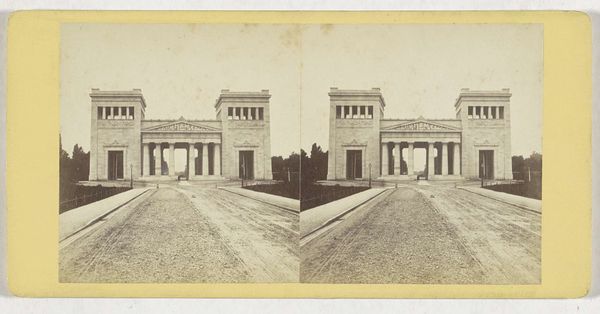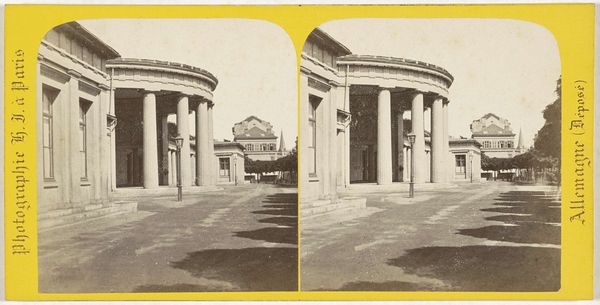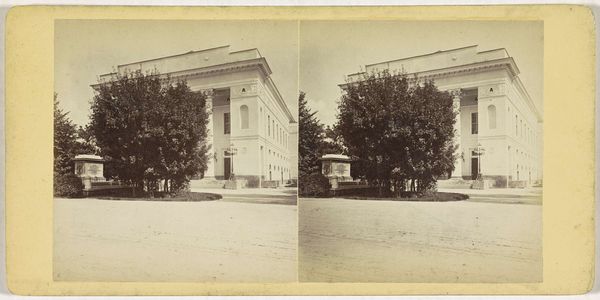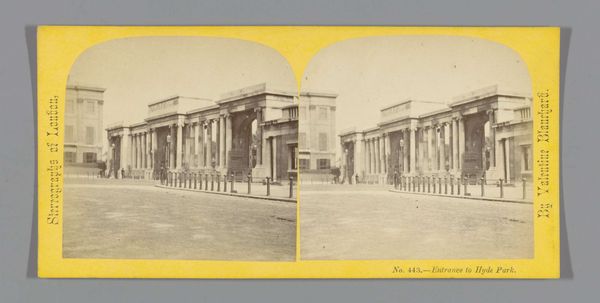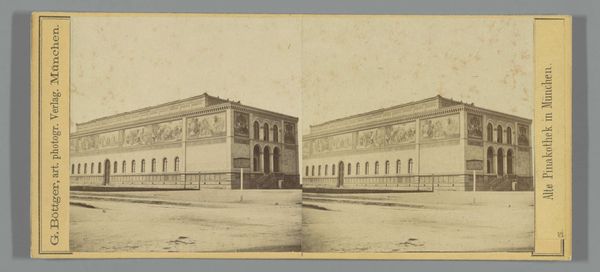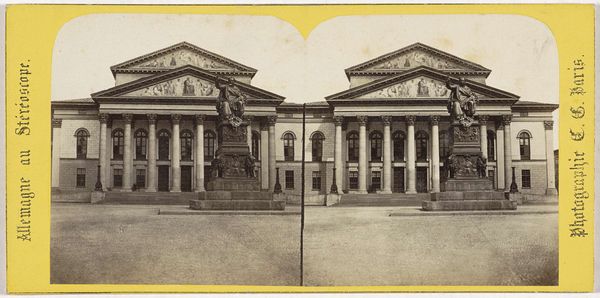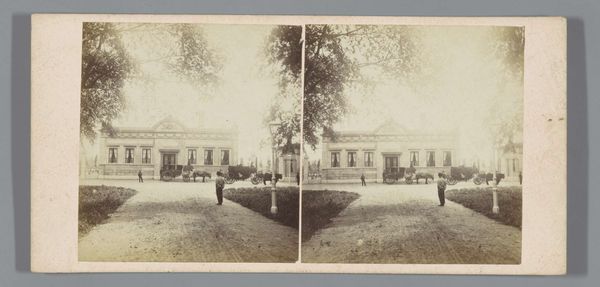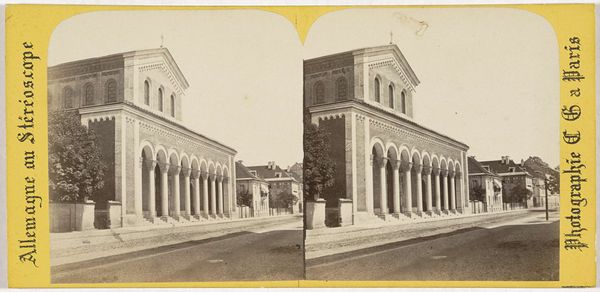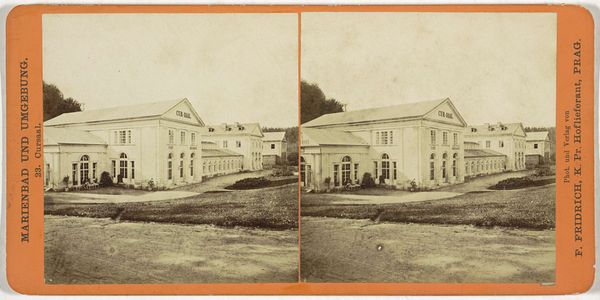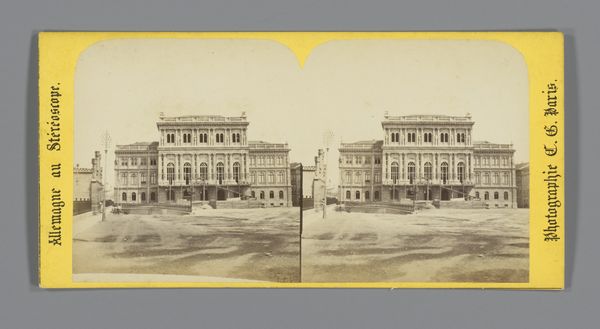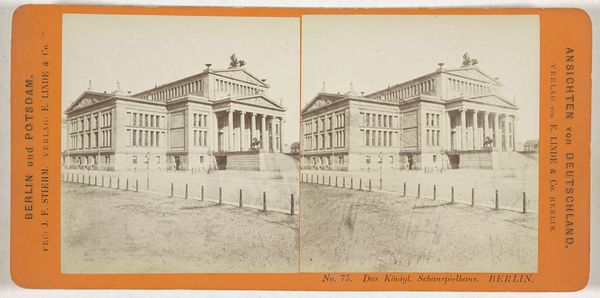
Dimensions: height 84 mm, width 174 mm
Copyright: Rijks Museum: Open Domain
This photograph of the Propylaea in Munich, Germany, was taken by Charles Gaudin, using the wet collodion process. This technique, popular in the mid-19th century, involved coating a glass plate with a light-sensitive chemical emulsion. The plate was then exposed in a large format camera, creating a highly detailed negative image. The visual effect here is soft. This is not just due to the inherent qualities of the collodion itself, but also the long exposure times required, which often resulted in a slight blurring of moving objects. Moreover, the photograph's sepia tone is a result of the chemicals used in the developing process. In Gaudin's time, photography was still a relatively new medium, often viewed as a craft rather than a fine art. This kind of photograph was often sold to tourists, eager to bring home a tangible memory of their travels. It represents both an aesthetic achievement and a piece of industrial output, reflecting the increasing commodification of culture in the 19th century. By focusing on the materials and processes involved, we can appreciate photography’s multifaceted role in shaping our understanding of the world.
Comments
No comments
Be the first to comment and join the conversation on the ultimate creative platform.
